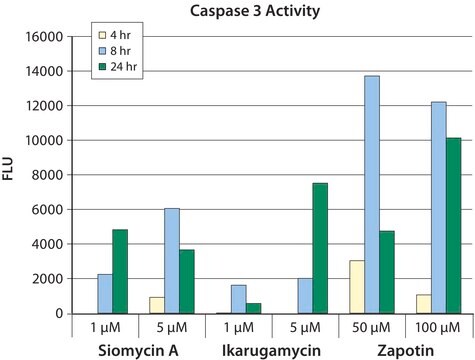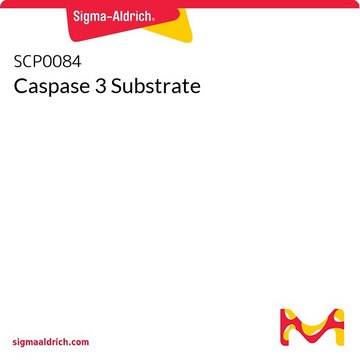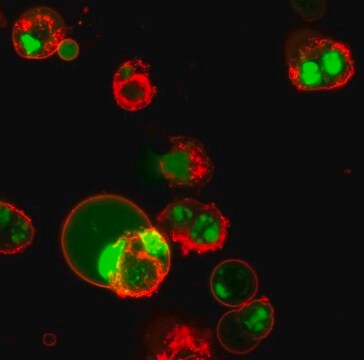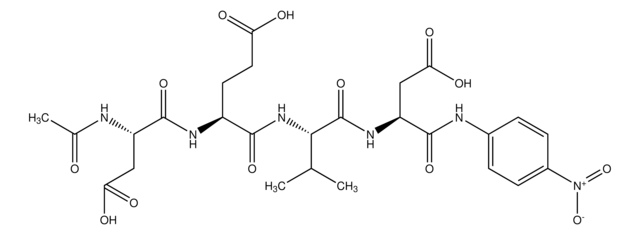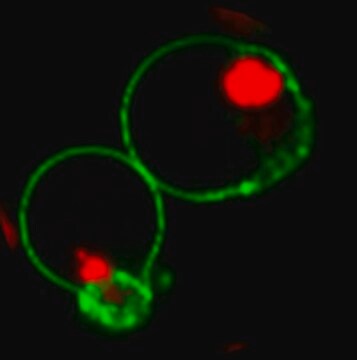CASP3C
Caspase 3 Assay Kit, Colorimetric
Synonym(s):
Colorimetric Caspase-3 Activity Assay Kit
About This Item
Recommended Products
usage
sufficient for 1,000 multiwell tests (in 96-well multiwell plates)
sufficient for 100 standard tests (1 ml)
Quality Level
shipped in
dry ice
storage temp.
−20°C
Gene Information
human ... CASP3(836)
General description
The Caspase 3 Colorimetric Assay Kit is based on the hydrolysis of acetyl-Asp-Glu-Val-Asp p-nitroanilide (Ac-DEVD-pNA) by caspase 3, resulting in the release of the p-nitroaniline (pNA) moiety. p-Nitroaniline is detected at 405 nm (εmM=10.5). The concentration of the pNA released from the substrate is calculated from either the absorbance values at 405 nm or from a calibration curve prepared with pNA standards (pNA standard included with the kit).
Application
Unit Definition
Other Notes
Kit Components Only
- Water (17-18 megaOhm) 125 mL
signalword
Danger
Hazard Classifications
Acute Tox. 3 Dermal - Acute Tox. 3 Inhalation - Acute Tox. 3 Oral - Aquatic Chronic 3 - STOT RE 2
Storage Class
6.1C - Combustible acute toxic Cat.3 / toxic compounds or compounds which causing chronic effects
flash_point_f
415.4 °F - closed cup
flash_point_c
213 °C - closed cup
Certificates of Analysis (COA)
Search for Certificates of Analysis (COA) by entering the products Lot/Batch Number. Lot and Batch Numbers can be found on a product’s label following the words ‘Lot’ or ‘Batch’.
Already Own This Product?
Find documentation for the products that you have recently purchased in the Document Library.
Customers Also Viewed
Articles
Cellular apoptosis assays to detect programmed cell death using Annexin V, Caspase and TUNEL DNA fragmentation assays.
Our team of scientists has experience in all areas of research including Life Science, Material Science, Chemical Synthesis, Chromatography, Analytical and many others.
Contact Technical Service
